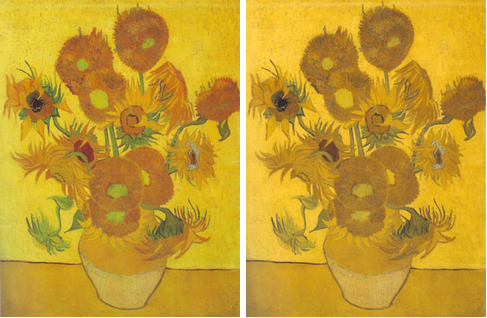“I have a portrait of Dr. Gachet with the heart-broken expression of our times.” - Vincent Van Gogh in a letter to Paul Gauguin
Vincent Van Gogh (1853 – 1890)
wanted to be a portrait painter. Because of his poverty, he could not afford to hire models to sit for him. Although best known for his wildly imaginative representations of common scenes from everyday life, Van Gogh needed the subjects before him in order to create. He could not draw or paint from imagination or memory.
One of the people who did sit for Van Gogh was his final doctor,
Paul Gachet (1829- 1909.) Dr. Gachet not only was Van Gogh’s doctor, but was also a fan. Gachet admired many artists of the time, including Paul Cezanne and Camille Pissarro. Van Gogh produced several versions of the good doctor’s portrait. The most famous version, done in oil paints, (pictured at left) fetched a staggering $82.5 million in 1990. Unfortunately, this version has
disappeared.
Painting General Description
This portrait is different from most other portraits for several reasons. Instead of sitting up straight, Dr. Gachet is slouched to one side, resting his head against one hand. On the table in front of him is a bunch of foxglove. The table also holds two books by Edmond and Jules Goncourt -
Manette Salomon and
Germinie Lacerteux. The former book is about four artists who live and die in obscurity. Gachet's coat is almost the same dark color as the wall, making him almost disappear into the background.
The brightest spot on the painting is the good doctor's white collar, bits of shirtsleeves peeking out of his coat sleeves and part of his dull white hat. But the most eye-catching feature is Dr. Gachet's expression. He's tired, resigned and possibly depressed. Modern doctors have speculated whether Gachet suffered from Addison's disease, because Gachet's nails are too pale in comparison to his skin.
Why So Sad?
Van Gogh would shoot himself a few months after completing his Dr. Gachet portrait series. Some art historians have speculated that Van Gogh showed the doctor looking so sad because Van Gogh was already considering suicide. Van Gogh's affectionate portrait reveals a level of intimacy that is not seen in most of his other portraits. Perhaps Van Gogh was trying to apologize for his suicide before he committed the act.
Another interpretation was that Dr. Gachet was an absinthe and foxglove tea addict, so Van Gogh merely portrayed the expression he most saw the doctor give the world. Another interpretation is that Van Gogh himself was tired of life and expressed his feelings in the face of his doctor, benefactor and friend.






.jpg)

.jpg)



